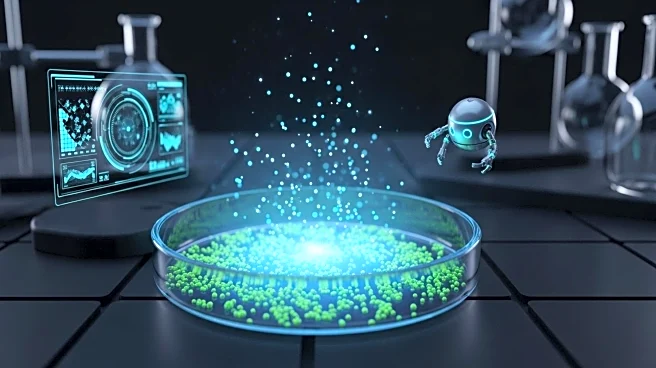What is the story about?
What's Happening?
Researchers have engineered a novel self-driven photodynamic therapy (Sd-PDT) system using bioluminescent bacteria to target cancer cells. The system utilizes Vibrio harveyi BB170 bacteria, which emit light to activate photosensitizers, generating reactive oxygen species (ROS) that kill cancer cells. This method allows for continuous light emission without external energy sources, leveraging the nutrients within the tumor microenvironment. The study demonstrated significant anti-tumor effects in various cancer cell lines and animal models, including melanoma and hepatocarcinoma, by inducing oxidative stress and disrupting tumor metabolism.
Why It's Important?
This development represents a significant advancement in cancer treatment, offering a potential alternative to traditional photodynamic therapy, which is limited by light penetration depth and requires external light sources. The self-sustaining nature of the Sd-PDT system could lead to more effective treatments for large and deep-seated tumors, reducing the need for invasive procedures. The ability to induce strong anti-tumor immunity and disrupt tumor metabolism further enhances its therapeutic potential. This innovation could transform cancer therapy, providing a more efficient and less invasive treatment option.
What's Next?
Future research will likely focus on optimizing the Sd-PDT system for clinical applications, including scaling up production and ensuring safety and efficacy in human trials. Researchers may explore combining this therapy with other treatments to enhance its effectiveness. Regulatory approval processes will be crucial for bringing this technology to market. The scientific community will also investigate the broader applicability of this system to various cancer types and its potential integration into existing treatment protocols.
Beyond the Headlines
The use of bioluminescent bacteria in medical applications raises ethical and safety considerations, particularly regarding the introduction of live bacteria into the human body. Long-term studies will be necessary to assess potential risks and address public concerns. This approach also highlights the growing intersection of biotechnology and medicine, paving the way for innovative solutions to complex health challenges.
AI Generated Content
Do you find this article useful?
















